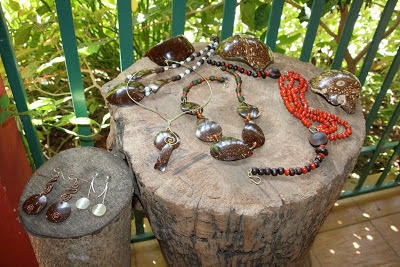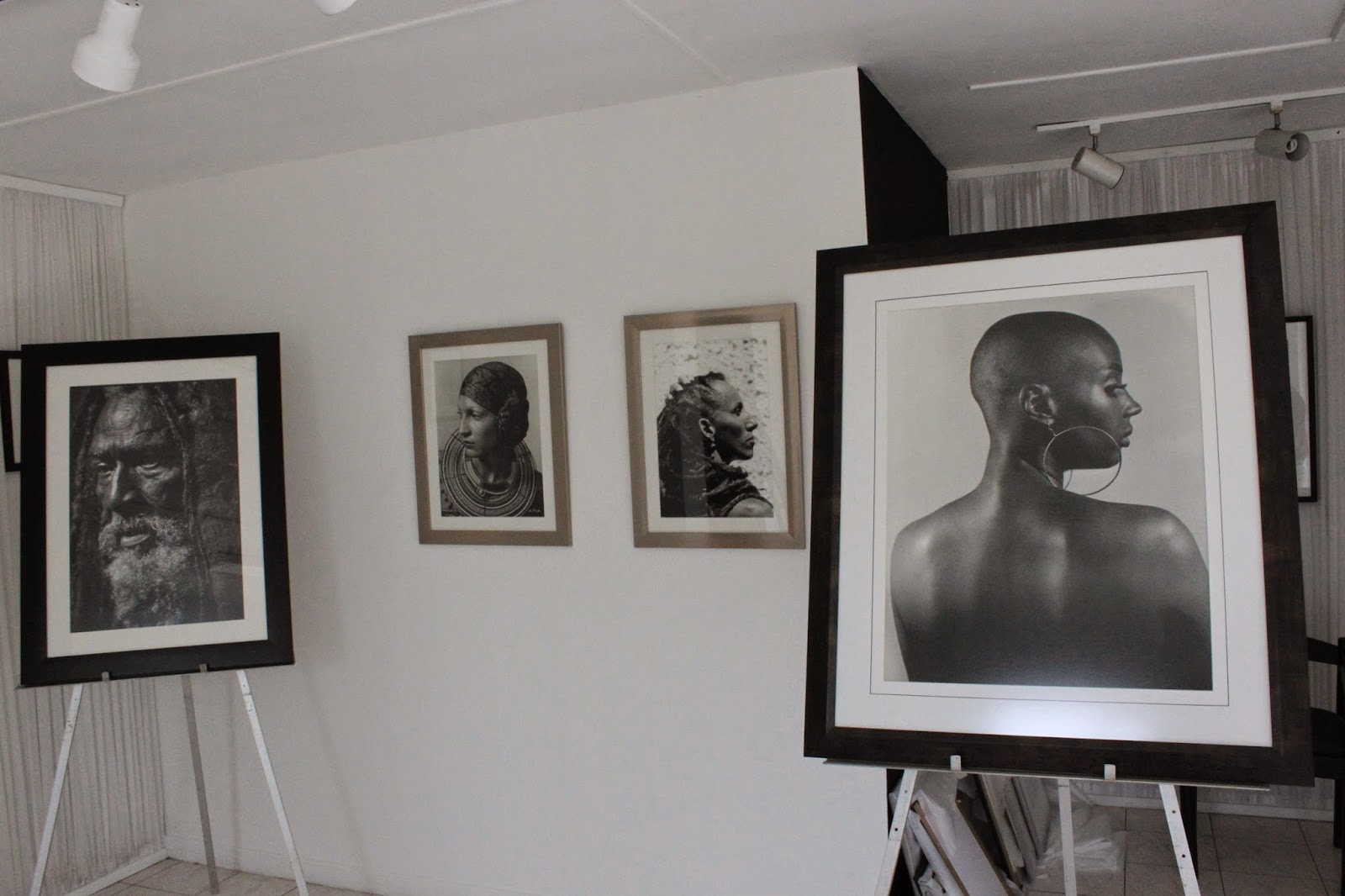How’d you like to be styled by nature?
Jewellers get inspiration from natural material
“God is really another artist. He invented the giraffe, the elephant and the cat. He has no real style. He just goes on trying other things,” once said Pablo Picasso, epitomising the vastness and out-of-the-box creative material that nature offers.
“I am a 3D thinker, and when I was at school (Edna Manley College of the Visual and Performing Arts), the logical gravitation was towards jewellery design,” says Damaris Mayne.
Mayne, a fine jeweller who works with noble metals and precious stones, started out designing gold jewellery, but over the years, she shifted to experimenting with more natural materials.
“The transition to natural materials happened after the prices of precious metals shot up,” she said. Necessity is the mother of all inventions, it is said, which in Mayne’s case, helped in carving a niche for her as she started creating earthy designs.
“I use a variety of materials coconut, mother’s pearls, calabash,” she informed.
Kima Francis, like Mayne, stumbled into jewellery making by chance, and she chose calabash as her material of choice. “The love for jewellery began when I was doing a project,” she said. “I liked calabash ... . It had a leathery kind of feeling and was easy to work with.”
Both designers have their distinct style, using varied techniques for their jewellery, but were bonded by the passion of creating original handmade designs. They say that the uniqueness of working with natural materials is that no two designs are repeated.
“When I get an order for making jewellery, I try and do them at one go to get consistency,” said Francis.
The raw materials come with their distinct patterns, which the designers say also adds uniqueness. “The design is nature-made, too. The ‘hair’ of the coconut that’s embedded in the shell gives it grooves ... . They are nature’s carvings,” said Mayne.
WORKING WITH SHELLS
Coconut and calabash have certain similarities as raw materials, the prepping method varies.
The coconut shell takes time to be prepped and is an intensive process. “The dried shell is sandpapered in stages starting with the rough paper going to the fine, to give the material the sheen and then it is mechanically buffed,” Mayne said.
“I would sometimes play with designs in my head for weeks to get the right mix,” she added.
Calabash, on the other hand, has a short preparation time.
“I pick calabash when its green and firm, cut it into half, scoop out the flesh, and keep it to dry for a couple of hours,” Francis explained.
“The good thing with calabash is that one can start working with it almost immediately, so whatever designs are in my mind can be translated into the finished product,” she said.
The final design, from start to finish, can take from two hours to a whole day. Mayne’s designs are complemented with copper or African glass beads that range from bold to subtle variants. Francis works with surgical steel or brass to complement calabash.
Mayne says she is inspired by Afrocentric rustic themes, which are reflected in her pieces, while Francis is in love with Indian jewellery, which is intricately carved and inlayed.
“Jewellery is a trend like fashion and it is no different from clothing,” Mayne says.

Worldwide, there has been a shift to more ethnic wear, which is also being made popular here. “We (Jamaicans) are trendy people.We end up making our own trends,” she said.
But, unfortunately, they say this creative acumen does not translate into bringing desired revenues.
“Sales fluctuate. It is high in summer, when there is a festival, or during Christmas time. (For the) rest of the year, it is lean,” says Francis, who is an arts teacher at a high school. “The jewellery business is a side.”
“As artists we can’t live on selling jewellery,” Mayne remarked. “Arts worldwide is heavily subsidised, and we have to find alternative methods to supplement our income.”

This ethnic jewellery, the designers say, has a growing clientele, but finds more appeal abroad. Mayne, a veteran in the business, has showcased her designs abroad and says she is getting a very positive response.
Francis has set her vision to move beyond the shores, and would like to export her jewellery.
Both designers say working with nature-derived materials, is a labour of love that gives them pleasure and gratification as they continue showcasing Jamaican creativity and ingeniousness to the world.
“God is really another artist. He invented the giraffe, the elephant and the cat. He has no real style. He just goes on trying other things,” once said Pablo Picasso, epitomising the vastness and out-of-the-box creative material that nature offers.
“I am a 3D thinker, and when I was at school (Edna Manley College of the Visual and Performing Arts), the logical gravitation was towards jewellery design,” says Damaris Mayne.
Mayne, a fine jeweller who works with noble metals and precious stones, started out designing gold jewellery, but over the years, she shifted to experimenting with more natural materials.
“The transition to natural materials happened after the prices of precious metals shot up,” she said. Necessity is the mother of all inventions, it is said, which in Mayne’s case, helped in carving a niche for her as she started creating earthy designs.
“I use a variety of materials coconut, mother’s pearls, calabash,” she informed.
 |
| Calabash jewellery by Kima Francis |
Kima Francis, like Mayne, stumbled into jewellery making by chance, and she chose calabash as her material of choice. “The love for jewellery began when I was doing a project,” she said. “I liked calabash ... . It had a leathery kind of feeling and was easy to work with.”
Both designers have their distinct style, using varied techniques for their jewellery, but were bonded by the passion of creating original handmade designs. They say that the uniqueness of working with natural materials is that no two designs are repeated.
“When I get an order for making jewellery, I try and do them at one go to get consistency,” said Francis.
 |
| Damaris Mayne |
WORKING WITH SHELLS
Coconut and calabash have certain similarities as raw materials, the prepping method varies.
The coconut shell takes time to be prepped and is an intensive process. “The dried shell is sandpapered in stages starting with the rough paper going to the fine, to give the material the sheen and then it is mechanically buffed,” Mayne said.
“I would sometimes play with designs in my head for weeks to get the right mix,” she added.
 |
| Kima Francis |
Calabash, on the other hand, has a short preparation time.
“The good thing with calabash is that one can start working with it almost immediately, so whatever designs are in my mind can be translated into the finished product,” she said.
The final design, from start to finish, can take from two hours to a whole day. Mayne’s designs are complemented with copper or African glass beads that range from bold to subtle variants. Francis works with surgical steel or brass to complement calabash.
Mayne says she is inspired by Afrocentric rustic themes, which are reflected in her pieces, while Francis is in love with Indian jewellery, which is intricately carved and inlayed.
“Jewellery is a trend like fashion and it is no different from clothing,” Mayne says.

Worldwide, there has been a shift to more ethnic wear, which is also being made popular here. “We (Jamaicans) are trendy people.We end up making our own trends,” she said.
But, unfortunately, they say this creative acumen does not translate into bringing desired revenues.
“Sales fluctuate. It is high in summer, when there is a festival, or during Christmas time. (For the) rest of the year, it is lean,” says Francis, who is an arts teacher at a high school. “The jewellery business is a side.”
“As artists we can’t live on selling jewellery,” Mayne remarked. “Arts worldwide is heavily subsidised, and we have to find alternative methods to supplement our income.”

This ethnic jewellery, the designers say, has a growing clientele, but finds more appeal abroad. Mayne, a veteran in the business, has showcased her designs abroad and says she is getting a very positive response.
Francis has set her vision to move beyond the shores, and would like to export her jewellery.
Both designers say working with nature-derived materials, is a labour of love that gives them pleasure and gratification as they continue showcasing Jamaican creativity and ingeniousness to the world.
amitabh.sharma@hotmail.com
Published October 14, 2012 - Sunday Gleaner




Good one! Quite innovative and skillful these ladies are.
ReplyDeleteThanks much AshishJ! It was an interesting and good experience being interviewed by Mr. Amitabh. It refocused and re-energised my drive to continue doing what I do! Thanks to Mr. Amitabh and my friend Kemoy who referred me to him! - Kima Francis
ReplyDelete